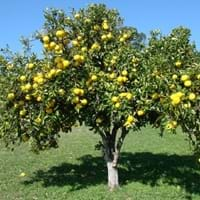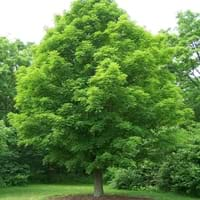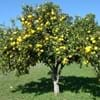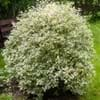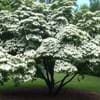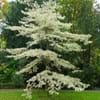Life Span
Perennial
Perennial
Origin
Hybrid origin
North America, United States, Northeastern United States, Mid-Atlantic United States, Southeastern United States, North-Central United States, Central United States, South-Central United States, Canada
Types
Jamaican sweet orange,Citrus maxima
not available
Number of Varieties
Not Available
Habitat
Fields, gardens, Moist Soils
Forest edges, Open areas, Roadsides, wastelands
USDA Hardiness Zone
9-11
4-8
Sunset Zone
H1, H2, 8, 9, 12, 13, 14, 15, 16, 17, 18, 19, 20, 21, 22, 23, 24
1a, 1b, 2a, 2b, 3a, 3b, 4, 5, 6, 7, 8, 9, 14
Habit
Oval or Rounded
Oval or Rounded
Flower Color
White
Chartreuse
Flower Color Modifier
Bicolor
Bicolor
Fruit Color
Yellow, Light Yellow, Pink
Tan
Leaf Color in Spring
Dark Green
Green, Dark Green
Leaf Color in Summer
Dark Green
Green, Dark Green
Leaf Color in Fall
Dark Green
Yellow, Red, Orange, Gold, Pink, Orange Red
Leaf Color in Winter
Dark Green
Not Available
Leaf Shape
Elliptic
Maple shaped
Plant Season
Spring, Summer, Fall, Winter
Spring, Summer, Fall
Sunlight
Full Sun, Partial Sun
Full Sun, Partial Sun
Type of Soil
Clay, Loam, Sand
Clay, Loam, Sand
The pH of Soil
Acidic, Neutral, Alkaline
Acidic, Neutral
Soil Drainage
Well drained
Well drained
Bloom Time
Early Spring, Spring, Winter, Late Winter
Early Spring
Tolerances
Light Frost, Sun
Not Available
Where to Plant?
Ground
Ground
How to Plant?
Grafting
Stem Planting
Plant Maintenance
High
Medium
Watering Requirements
Requires regular watering
Requires regular watering
In Summer
Lots of watering
Lots of watering
In Spring
Moderate
Moderate
In Winter
Average Water
Average Water
Soil pH
Acidic, Neutral, Alkaline
Acidic, Neutral
Soil Type
Clay, Loam, Sand
Clay, Loam, Sand
Soil Drainage Capacity
Well drained
Well drained
Sun Exposure
Full Sun, Partial Sun
Full Sun, Partial Sun
Pruning
Prune ocassionally, Remove dead branches, Remove dead leaves
Remove damaged leaves, Remove dead leaves
Fertilizers
10-15-10 amounts, fertilize in growing season
Doesn't require fertilization when grown in rich soil
Pests and Diseases
Bud blast, Citrus canker, Red blotch, Scale
Red blotch
Plant Tolerance
Drought, Shade areas
Drought
Flowers
Showy
Insignificant
Flower Petal Number
Single
Not Available
Fragrant Bark/Stem
Yes
No
Foliage Texture
Medium
Medium
Foliage Sheen
Glossy
Matte
Attracts
Birds, Butterflies, Hummingbirds
Not Available
Allergy
Constipation, Swelling in the face, Vomiting, wheezing
Asthma
Aesthetic Uses
Cottage Garden
Showy Purposes
Beauty Benefits
Acne, Improve skin tone, Not Available, Nourishes scalp, Perfumes
Not Available
Environmental Uses
Food for animals, Prevent Soil Erosion, soil stabilisation
Air purification
Medicinal Uses
Acne, Aging, Antibacterial, constipation, Glucose, Nutrients
Cough, Diarrhea, Diuretic, Expectorant, Sore Eyes
Part of Plant Used
Fruits, Leaves
Whole plant
Other Uses
Beneficial species for attracting pollinators, Making Perfumes, Medicinal oil, Used as a nutritious food item, Used As Food
Edible syrup, Used as Ornamental plant
Used As Indoor Plant
Sometimes
No
Used As Outdoor Plant
Yes
Yes
Garden Design
Container, Edible, Feature Plant, Fruit / Fruit Tree, Topiary / Bonsai / Espalier
Feature Plant, Shade Trees
Botanical Name
CITRUS x paradisi
ACER saccharum
Common Name
Grapefruit
Sugar Maple
In Hindi
चकोतरा
चीनी मेपल
In German
Grapefruit
Zuckerahorn
In French
pamplemousse
sucre d'érable
In Spanish
Pomelo
arce de azúcar
In Greek
γκρέιπ φρουτ
Maple ζάχαρη
In Portuguese
Toranja
Bordo de Açucar
In Polish
grejpfrut
Cukier klonowy
In Latin
Not Available
Sugar Maple
Phylum
Magnoliophyta
Magnoliophyta
Class
Magnoliopsida
Magnoliopsida
Order
Sapindales
Sapindales
Family
Rutaceae
Aceraceae
Clade
Dicotyledonous
Angiosperms, Eudicots, Rosids
Tribe
Not Available
Not Available
Subfamily
Rosoideae
Not Available
Number of Species
Not Available
Not Available
Importance of Grapefruit and Sugar Maple
Want to have the most appropriate plant for your garden? You might want to know the importance of Grapefruit and Sugar Maple. Basically, these two plants vary in many aspects. Compare Grapefruit and Sugar Maple as they differ in many characteristics such as their life, care, benefits, facts, etc. Every gardener must at least have the slightest clue about the plants he wants to plant in his garden. Compare their benefits, which differ in many ways like facts and uses. The medicinal use of Grapefruit is Acne, Aging, Antibacterial, constipation, Glucose and Nutrients whereas of Sugar Maple is Cough, Diarrhea, Diuretic, Expectorant and Sore Eyes. Grapefruit has beauty benefits as follows: Acne, Improve skin tone, Not Available, Nourishes scalp and Perfumes while Sugar Maple has beauty benefits as follows: Acne, Improve skin tone, Not Available, Nourishes scalp and Perfumes.
Compare Facts of Grapefruit vs Sugar Maple
How to choose the best garden plant for your garden depending upon its facts? Here garden plant comparison will help you to solve this query. Compare the facts of Grapefruit vs Sugar Maple and know which one to choose. As garden plants have benefits and other uses, allergy is also a major drawback of plants for some people. Allergic reactions of Grapefruit are Constipation, Swelling in the face, Vomiting and wheezing whereas of Sugar Maple have Asthma respectively. Having a fruit bearing plant in your garden can be a plus point of your garden. Grapefruit has showy fruits and Sugar Maple has showy fruits. Also Grapefruit is not flowering and Sugar Maple is not flowering . You can compare Grapefruit and Sugar Maple facts and facts of other plants too.
